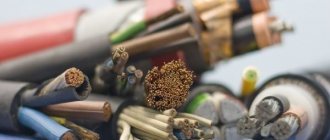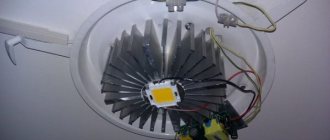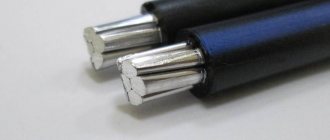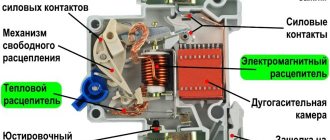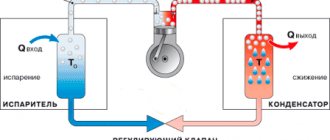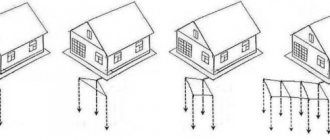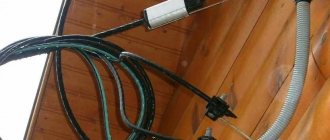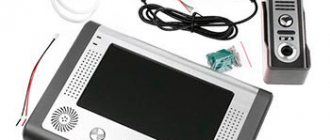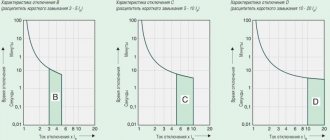Generator for welding: choosing an alternator and calculating power
Not every generator is suitable for welding, and this is important to understand when choosing. Essentially, electric welding is a short circuit, so not every generator will respond adequately to it.
In addition to power, it is important to know that there are different generators: asynchronous, synchronous, and also inverter. Synchronous generators are not suitable for welding work, and inverter generators are not designed for this purpose.
Therefore, before choosing a generator for welding, it is important to understand what to look for first.
Generator for welding: choosing an alternator and calculating power
How to calculate the generator power for inverter welding? This is the question that most worries those who need to cook from an autonomous source of electricity.
In fact, calculating the generator power for a welding inverter is simple; you just need to multiply the welding current by the arc voltage and divide the result by the efficiency of the inverter. What does it mean?
When choosing a generator for welding, you need to understand which electrodes will be used. If the diameter is 3 mm, then you need a welding current within 100 amperes. Knowing this, you can calculate the approximate power of the generator: 100A*25V/0.9 = 2.8 kW .
In this case, it is worth taking into account a certain margin, and for a generator it should be at least 30%. Therefore, we add 30% of the reserve to the resulting power of 2.8 kW and get 3.6 kW of generator power.
This is exactly the power that a gasoline generator will need to properly cook with a triple electrode.
What power generator is needed for inverter welding?
When repairing metal objects, a welding inverter is simply irreplaceable. It is very convenient to weld and cut metals while sitting in your workshop close to the power supply, but conditions do not always allow you to simply connect to an outlet. A generator will solve this problem. With it you don't have to look for energy sources.
Now another problem arises, which electric generator to choose? For beginners, this may seem like a very difficult question. In fact, everything is much simpler than you think. We have divided all the criteria that must be met in your future generator into 4 points:
● Is it compatible with your inverter;
● Maintaining power compliance;
● Permissible maximum current;
● Does the electric generator support the required electrode diameter;
The basis is more or less clear, now more specifically about each of the points.
Is the electric generator compatible with your inverter?
The first thing you should pay attention to is the type of generator. There are different types, but we are not particularly interested in this, because only synchronous generators or hybrids are suitable for a welding inverter. Hybrids are those that work both synchronously and asynchronously.
Only these two types of generators can provide sufficient power. You don't even have to consider all the others. Quite simple, but very important point.
Power matching.
Next, you should look at the power of the generator, and then the power of the inverter. The electric generator should be 25%-35% more powerful than your welding machine. So to speak, in reserve. The fact is that using the generator at full strength is harmful, it can lead to premature breakdowns. In order to avoid severe overheating or damage, we need a slight superiority in power, by the way, the more it is, the better for you. In addition, there will be fewer interruptions during operation.
In general, an equally important detail when choosing.
You can always find information about the inverter in its technical data sheet. If you have lost documents or for some other reason do not know the power of your welding machine, you can easily calculate it using the following formula:
Maximum current*arc voltage/welding inverter efficiency=maximum power.
Inverter efficiency=0.85
Arc voltage=25V
The maximum current strength is not a constant value.
The efficiency values and arc voltage are constant values, in contrast to the maximum current strength, its value varies and depends on the model. If you know the amperage, assume that you know the power your generator needs. You can also clarify this data by calling the manufacturer or finding it on the Internet.
By the way, it is not necessary to take powerful generators. You can purchase weaker models, but they will have some limitations. To set these same boundaries, an already known formula will help.
Let's say you bought a 4.5 kW electric generator. We slightly alter the formula and substitute.
Power*Efficiency/Arc Voltage = Current
that is
4500*0.85/30 = 127.5 A
This means that the maximum you can operate with the inverter is up to 125 Amps, but up to 120 Amps is recommended. Don't forget, the capacity of the power plant must be greater.
Top 5 best generators for 2022
To make it even easier for you to decide, we have selected the top 5 inexpensive generators that you will definitely like!
Kronwerk LK 210E
Price ~38,000 rubles.
This model runs on gasoline and supports synchronous welding. It is equipped with many nice features such as system overheat protection, AVR, DC, fuel and oil gauge. Operating it is intuitively simple. The power of this generator is 4.5 kW - operating and 5 kW - maximum.
Kronwerk LK 210E is an excellent choice. Users note its efficiency, tank capacity and smooth welding when working with it. Plus it's on wheels! This generator weighs 73 kg, so the wheels come in handy.
HUTER DY6500L
Price ~35,000 rubles.
This model is very similar to the previous one, it can be operated on gasoline and gas, has a synchronous alternator, and is protected from overheating. You can safely put it away in the far corner of your workshop and not be afraid of breakdowns, because the HUTER DY6500L is protected from dust and moisture. The operating power of this unit is 5 kW, maximum -5.5 kW.
HUTER DY6500L is great for long jobs, up to 8-10 hours without a break. Its low price and good technical characteristics give it a place in our top.
Caliber BSEG-5500A
Price ~55,000 rubles.
Like the previous two models, this generator is single-phase and runs on gasoline. Developed on the basis of the air-cooled NT190FDE engine system. It is important to say that electrodes with a diameter of 2.5-4.2 mm are acceptable for this model, but do not take this as a minus, electrodes with this diameter are suitable for most tasks. The operating power of this generator is 5 kW, and the maximum power is 5.5 kW.
The main advantages of this device are that it consumes fuel economically and has a spacious tank of 25 liters. The BSEG-5500A caliber will allow you to make even seams and you will be able to work on it for a long time without any interruptions. And for more convenient transportation, Caliber BSEG-5500A has colic.
For 55,000 rubles you get a high-quality power source for your inverter.
Brima LT 8000 B
Price ~46,000 rubles.
There are very few high-quality electric generators under 50,000 rubles, Brima LT 8000 B is an exception. Brima LT 8000 B is a German powerhouse with a decent build that is suitable for welding machines with a current of up to 180 Amps and less. This is a high figure.
The rated power is 6 kW, and the maximum is 6.3 kW, this significantly expands the scope of application of the electric generator and allows it to be used not only for welding machines. Tank capacity is 25 liters, with a flow rate of 2 liters/hour. Brima LT 8000 B will provide you with uninterrupted operation. For convenience there are wheels.
This power plant has one drawback, the lack of a display, which makes it inconvenient to measure operating hours. Otherwise, this is a very decent option for 45,000-50,000 rubles.
Brima LT 8000 B is a high-quality model that will serve you for many years.
TCC DGW-200E
Price ~75,000 rubles.
This is the most expensive model in our selection, but it is deservedly expensive.
For starters, the appearance. This diesel generator is located on a reinforced frame with wheels, it is not made for beauty, the TCC DGW-200E weighs 112 kilograms. Don't be intimidated by this weight, thanks to its protective design and wheels, you can easily transport it without fear of damage.
Now about the technical specifications. TCC DGW-200E has an operating power of 3 kW and a maximum power of 3.5 kW, but do not think that this is not enough, it is suitable for inverters with a current of up to 190 Amperes. I think it's not bad.
Electrodes are suitable from 1.6 mm to 4 mm in diameter, the quality of the seams is high.
TCC DGW-200E is functional, protected from overloads and economical in fuel consumption (1.9 liters/hour). If you need a generator that will provide trouble-free operation and last for many years, then the TCC DGW-200E is ideal.
Conclusion
In this article we answered the main question of how to choose a generator. We described the process of selection and the main criteria, talking in detail about each of them. Do not forget about the power and type of generator, these are very important criteria. We have also provided you with the top 5 high-quality electric generators at a low price. This rating was compiled based on the personal experience and opinions of users of these power plants.
We hope this article was useful!
Generator winding - copper or aluminum?
There is no fundamental difference whether the generator winding for welding will be copper or aluminum. It will be possible to weld metal in both cases.
However, it is worth considering the fact that the copper winding of the generator has greater reliability, resistance to overloads and durability. Therefore, if you are choosing a gasoline generator for constant welding work, then it is better to give preference to one that has a copper alternator (winding).
Principle of operation
All electric generators are designed approximately the same. A compact internal combustion engine drives an electric generator. Today, the most widely used are electric generators that produce alternating electric current. Such devices are simpler, more reliable and cheaper than DC generators. Household consumers, which also include welding machines, are designed for power supply with an alternating voltage of 220 V with a frequency of 50 Hz. To maintain these parameters within acceptable limits, mobile gas generators must contain an engine speed regulator when the load changes.
Modern autonomous generators (in order to obtain high-quality power at the output) are built according to a two-stage scheme. First, the voltage from the generator is rectified. This eliminates the influence of gasoline engine speed on the frequency and voltage at the output of the unit.
Inverter gas generators provide high-quality power supply to any household appliances. But if the unit is intended exclusively for welding, its circuit is somewhat simplified - such an inverter is initially built according to the circuit of a welding machine. A gas generator with a welding function does not require intermediate conversion of electricity to the “220 V 50 Hz” standard. This makes the design easier and simpler, but narrows the scope of application of the unit.
Selection of welding machine
Let's say you purchased a 7 kilovolt-amp electric unit. In order to find out the P of the inverter, you need to multiply the total P of your power plant by the value of KM (KMinv). (Usually this parameter is 0.6).
It follows that P inv = P gen (kVA)*KMinv= 7*0.6 = 4.2 kW. As a result, we get kilowatts of a welding device, which will pull the generator at a maximum of 7 kilovolt-amperes.
If you follow these calculations, then the combination of power source + welding unit will probably hit you hard on your pocket.
Don't be afraid, there is a way out of this situation.
Maximum current calculation
You can connect an inverter to a power plant even if they are the same in power. To do this, it is necessary to limit the maximum current (Imax).
To find Imax, multiply the power of your power source (for example, 5 kilowatts) by the efficiency of the welding device and divide the arc voltage.
Example
Imax(A) = Pgen(kW)*Efficiency/Uarc = 5*0.85/25 = 170A
We have obtained the maximum current level at which we can operate a 5 kW generator. Do not exceed this figure, and you can connect a welding inverter to the electrical unit, which even exceeds it in power
How to choose a gas generator for inverter welding
In order not to make a mistake in choosing, you do not need special knowledge or many years of experience. It is enough to pay attention to just a few parameters, namely:
- what devices the generator is compatible with;
- its power consumption;
- what diameter electrodes the energy source is designed for;
- maximum inverter current.
The power consumption of the generator and the current strength of the inverter are interrelated characteristics. But regarding compatibility, you should carefully choose the type of electricity source. The retail network offers synchronous, asynchronous and inverter models. A special place is given to hybrid installations, which can operate in two modes - synchronously and asynchronously.
At first glance, it may seem that the choice is more than obvious: after all, the list includes inverter models. But this is not true. A synchronous gasoline generator or hybrid is suitable for the inverter as a power source. The fact is that they have a large power reserve and are designed for high inrush currents.
Why gasoline and not diesel, of which there are also many on the market? Yes, gasoline models produce more expensive electricity, but they work much better at low power levels. And the range of gasoline models is much wider, which will allow you to choose the best option that can be used for other purposes.
If you need to choose a generator for a professional-level welding machine, for example, for a semi-automatic machine, then you should think carefully. The problem is that semi-automatics don't always work well. Conscientious manufacturers directly warn about this in their instructions. Therefore, you should not rely on your own intuition, but should consult a consultant in the store.
Selection of generator for welding
When the design of a gas-welding generator is equipped with cast iron sleeves, its service life increases dramatically.
These devices can be used for approximately 1500 operating hours. Aluminum analogues have a shorter service life. Today you can purchase inverter units that have power factor adjustment. These systems can work with a variety of generator models as they can be set to low voltage.
Diesel models are suitable for daily, long hours of work. A device with a power of 0.7-5 kW is suitable for working on a personal plot. These products do not have much weight. Therefore, they are easy to transport from place to place. A power of 10 kW allows you to perform daily work for 8 hours.
The most important parts, especially their dimensions, in a gasoline welding generator are:
- Fuel tank.
- Sound insulation casing.
For construction sites, it will be better to use equipment with valves on the top. The advantage of such devices is:
- High performance.
- Silence.
- Durability.
- Compactness.
Most popular models
Depending on the operating principle of the engine, almost all gasoline welding machines are divided into several types:
- Two-stroke.
- Four-stroke.
To work in domestic conditions, the HUTER DY6500L model is considered the most efficient and productive. The device is not designed for long-term use, but it differs from other products in its good characteristics. Such a compact station works perfectly together with a Svarog-type inverter.
The target system Brima LT 8000B shows excellent performance with most inverters manufactured by Resanta. Sometimes Brima can become a backup power supply for a country house.
The Endress ESE 606 system has a very large fuel tank. The model is highly expensive. However, it lasts much longer than a conventional generator. The product is equipped with a Honda engine, which significantly reduces fuel consumption. The device shows excellent results when working in conjunction with an EWM type inverter.
How to care for your generator
Servicing a gasoline generator does not involve serious technological operations. It is enough to monitor the oil level. Top it up if necessary. Sometimes you will need to recharge the battery.
https://youtube.com/watch?v=MXDzKmpZEO4

